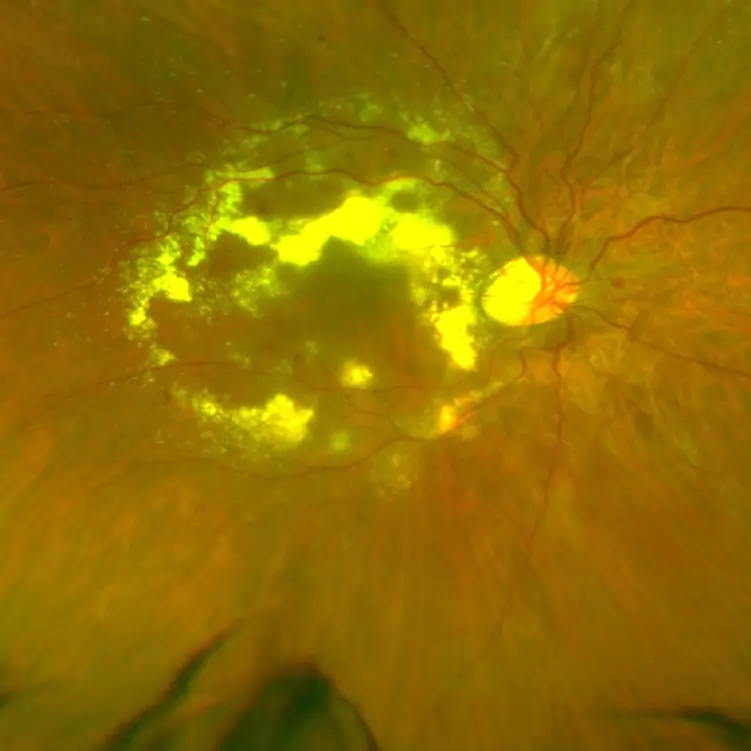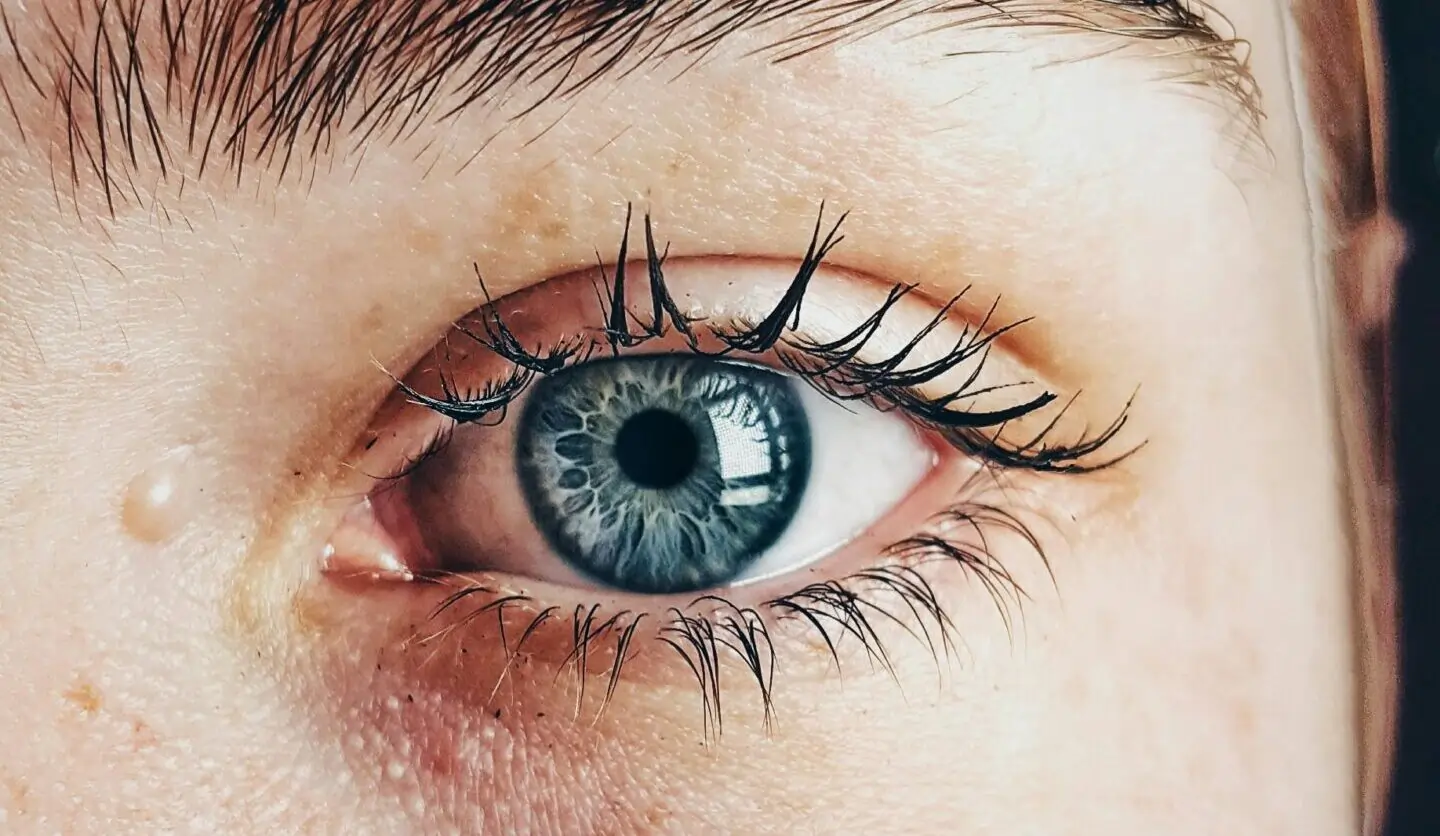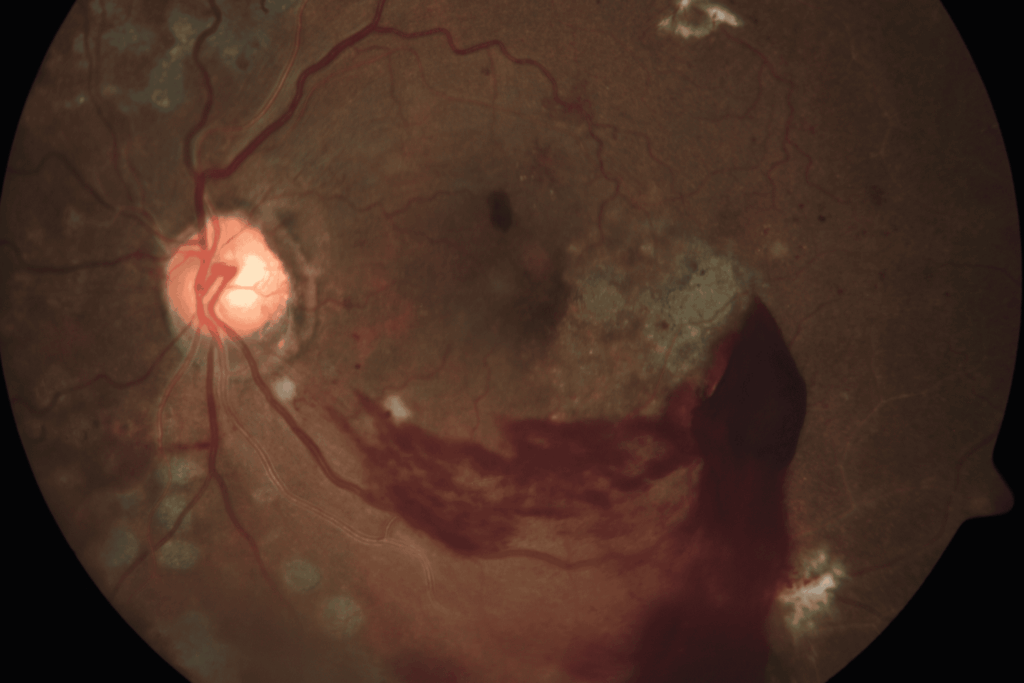
Diabetic Retinopathy Treatment
Proliferative & Non-Proliferative Diabetic Retinopathy
Diabetic retinopathy is a condition where high blood sugars damage the blood vessels in the retina (the retina is the layer of cells in the back of the eye that transmit light to the brain to form images). There are two main types of diabetic retinopathy: non-proliferative diabetic retinopathy (NPDR) and proliferative diabetic retinopathy (PDR).
Non-Proliferative Diabetic Retinopathy
Among the first signs of diabetic retinopathy are microaneurysms, which are small red “blood dots” or hemorrhages that indicate pouches in the retinal capillaries and arteries (small blood vessels). These pouches leak serum or fluid from the bloodstream into the retina called exudates, which may cause it to swell. This swelling of the retina is known as macular edema. As retinopathy progresses, white spots in the retina, known as cotton-wool spots, may also develop which suggests lack of oxygen or blood flow. The swelling of the macula (diabetic macular edema) is the most common reason a patient with Diabetes will notice blurred central vision. Vision loss can range from mild to severe because of diabetic macular edema (DME).
Proliferative Diabetic Retinopathy
In some patients, diabetic retinopathy may progress from non-proliferative to proliferative. Proliferative diabetic retinopathy is characterized by neovascularization (neo = “new” and vascularization = “blood vessels”). That is, the appearance of new, fragile blood vessels on the optic nerve or retina’s surface. These new blood vessels frequently bleed into the vitreous cavity, causing hemorrhage. Furthermore, they may cause scarring on the retina, which can pull the retina, causing tractional retinal detachment. These new blood vessels are like “weeds in the garden” and may even grow in the front of the eye on the iris, causing a severe type of glaucoma to develop.
What are the warning symptoms of diabetic retinopathy?
Often those diagnosed with diabetic retinopathy have normal vision, particularly when there is no diabetic macular edema, vitreous hemorrhage or tractional retinal detachment. This is precisely why regular eye examinations are important and can yield the most effective treatment because early detection is extremely vital.
When patients do exhibit symptoms, they often begin with blurred vision. Patients may also begin to see floaters, which may be signs of a vitreous hemorrhage.
What are the causes of diabetic retinopathy?
Generally, diabetic retinopathy is caused by damage to the retinal blood vessels as a result of elevated sugar (glucose) levels in the bloodstream. Chronic elevated glucose levels may damage normal retinal blood vessels, causing them to leak fluid or create small hemorrhages in the retina. In more advanced stages, the retinal blood vessels can become blocked, restricting the retina’s oxygen levels. As a reaction to this, the retina grows new blood vessels or neovascularization.
Treatment for Diabetic Retinopathy
The first measure of treatment in diabetic retinopathy is to control blood glucose levels. This will not prevent or reverse diabetic retinopathy, but tends to slow its progress. Doctors can use laser photocoagulation to treat macular edema, placing small burns around the retina’s center, known as the macula. Alternatively, doctors may inject drugs such as ranibizumab (Lucentis), bevacizumab (Avastin), aflibercept (Eylea), or steroids into the eye, in a treatment known as an intravitreal injection. Similar to the pills or Insulin that is necessary to manage one’s diabetes, these injections may be necessary to manage the complications of the disease for years to come.
Doctors and patients can determine the most suitable treatment methods based on the patient’s severity and the macular edema’s precise location. Often, intravitreal injections must be repeated in order to control the macular edema. Proliferative diabetic retinopathy is generally treated with laser photocoagulation, where laser burns are placed in the peripheral retina, but can also be augmented with intravitreal injections. This treatment creates a lower oxygen demand for the retina, either reducing or totally resolving retinal and optic nerve neovascularization. Both forms of treatment can be performed in an office setting.
In cases of vitreous hemorrhages or traction retinal detachment, a patient may require a surgical procedure known as vitrectomy. Unlike intravitreal injections or laser photocoagulation, vitrectomy is performed in an operating room.
In treating diabetic retinopathy, early detection is imperative. Treatment is much easier and less invasive in the earlier stages and timely treatment of diabetic retinopathy is the best way to guard against progressive vision loss. Although keeping one’s blood sugars under control does not guarantee good vision, it can reduce the risk of blindness compared to those patients who don’t control their blood sugars.
Contact Our Retina Doctors Today
If you have diabetes, it’s important to have your pupils dilated by an eye care professional and if diabetic retinopathy is diagnosed, seeing a retina specialist such as Retina Associates of Orange County can be important in the prevention of further vision loss. Contact the Retina Associates of Orange County to schedule your appointment today.
Who is Most Affected
People who are diagnosed with diabetes can develop diabetic retinopathy, as an eye doctor who treats Laguna Hills diabetic retinopathy patients can explain. Individuals with both Type 1 and Type 2 diabetes are vulnerable to the disease. The excessive blood sugar levels can cause the small blood vessels to expand and burst. If you are diagnosed as pre-diabetic, you may also be at higher risk of developing the condition if you develop diabetes later on.
Common Questions About Diabetic Retinopathy
Diabetic retinopathy is a complex disease, and it can be tough to understand. Many patients have questions about it and what to do if they are diagnosed with the disease. When you see a retina specialist who has experience treating this condition, they answer frequently asked questions such as:
- Is the condition reversible?
- What treatments are available for me?
- What are some of the most common early symptoms?
- Can I reduce my risk of developing diabetic retinopathy?
If you have difficulty understanding any part of diabetic retinopathy, an eye doctor will gladly answer your questions and address your concerns. Having a basic understanding of this disease can help you better understand your diagnosis and what you can do moving forward to reduce the health impact and long-term consequences.
Preventing Diabetic Retinopathy
If you have been diagnosed with diabetic retinopathy, there are some ways that you can prevent the disease. In addition to treatments suggested by your doctor, you can implement many lifestyle changes. Managing your sugar level so that it is healthy is the best way to prevent diabetic retinopathy. Watch your sugar consumption and make sure that you are not consuming too much sugar on a daily basis. Significantly reducing your sugar intake or cutting out certain types of foods with a high amount of sugar from your regular diet can greatly cut your chances of reducing diabetic retinopathy. Consider talking to a nutritionist or other health professional who can help you make necessary dietary changes or adjustments.
When To See an Eye Doctor
As soon as you spot signs of diabetic retinopathy, do not wait too long to set up an appointment. See a doctor right away because it is the only way to understand the severity of your symptoms. A Laguna Hills diabetic retinopathy specialist will do a variety of diagnostic tests so that they can see how far your disease has advanced. The earlier you do so, the higher your chances of successfully treating the disease will be.
You should see a doctor who has specific experience treating patients who have diabetic retinopathy. It is a highly specialized disease, so you will need to see a doctor who is highly familiar with the symptoms and most suitable treatment options that can greatly alleviate your symptoms and improve your vision.
Schedule a Consultation With a Specialist
There are treatment options available if you have diabetic retinopathy. If you meet with a doctor as soon as you can, you can receive the urgent treatment that you need to better manage your condition. Talk to a reputable and competent eye doctor who treats Laguna Hills diabetic retinopathy patients in your area now.
Treatment For Diabetes-Related Eye Conditions
Living with diabetes requires careful management of your health, including paying close attention to your eyes in case of diabetic retinopathy. Diabetes can affect your vision in several ways, but at Retina Associates of Orange County, we’re committed to helping our patients manage their eye health effectively. We’ve received numerous awards for our efforts, including “Top Doctors in Orange County”, and “Best Doctors of America”. Now, it’s time to use our award-winning dedication to our clients to help you. Read on to learn more about treatment options, and contact us today to get started.
1. Comprehensive Eye Exams
Regular eye examinations are fundamental for anyone with diabetes. These exams allow us to catch changes in the eyes early and start treatment promptly. We recommend that our patients with diabetes have a thorough eye exam at least once a year, or more frequently if recommended.
2. Blood Sugar Control
Managing your blood sugar levels is a critical part of treating eye conditions related to diabetes. High blood sugar can lead to changes in the blood vessels of the eyes and can cause them to leak or become blocked. Keeping your blood sugar within your target range can help protect your eyes from further damage.
3. Blood Pressure And Cholesterol Management
High blood pressure and elevated cholesterol can exacerbate eye problems in diabetic patients. By keeping these under control, you can reduce the risk of vision impairment. We often work in conjunction with your primary care physician or endocrinologist to ensure all aspects of your diabetes are managed.
4. Medications
Certain medications can be used to treat diabetes-related eye conditions. These include anti-VEGF injections, which help to reduce swelling and improve vision by blocking a protein that causes abnormal blood vessels to grow and leak fluid. Steroid injections and laser treatments might also be recommended depending on the specifics of your condition.
5. Laser Therapy
Laser treatment, or photocoagulation, involves the use of laser light to seal or destroy growing or leaking blood vessels in the retina. This procedure can prevent further vision loss and stabilize vision by reducing swelling and leakage. It’s commonly used in various stages of diabetes-related eye conditions to slow progression and preserve eyesight.
6. Vitrectomy Surgery
In advanced cases where there is bleeding in the eye or significant vision loss due to retinal detachment, a surgical procedure called vitrectomy may be necessary. This involves removing the vitreous gel from the eye to prevent it from pulling on the retina and to clear up any blood that may be clouding vision.
7. Regular Monitoring And Follow-Up
Consistent follow-ups are a must for patients dealing with diabetes-related eye conditions such as diabetic retinopathy. Regular monitoring allows us to assess the effectiveness of your treatment plan and make adjustments as necessary. It also provides an opportunity to address any new symptoms that may arise quickly.
Let’s Get In Touch
At Retina Associates of Orange County, we’re dedicated to providing the best possible care to our patients. If you are experiencing any changes in your vision or have been diagnosed with diabetes and have not had a recent eye exam, we encourage you to contact us today. Get in touch with our team, and see how we can help with your diabetic retinopathy.
Interpreters are Available!
Posted onTrustindex verifies that the original source of the review is Google. Cannot say enough about the level of expertise and competency of Dr Hwang and his staff. He saved my vision by repairing a detached retina in my right eye and has been providing incredible care in treating my macular condition and retaining my vision over the years. He is caring and compassionate with a true love for his practice. I am blessed to be one of his patients!Posted onTrustindex verifies that the original source of the review is Google. Check up on visual issue went perfectly. Great staff as well.Posted onTrustindex verifies that the original source of the review is Google. Professional and thoughtful doctor, caring patient as a family member.Posted onTrustindex verifies that the original source of the review is Google. Great service. Very satisfied.Posted onTrustindex verifies that the original source of the review is Google. I have tremendous anxiety prior to my intraocular injections to manage my wet AMD, but Dr. Hwang makes the process as quick and painless as possible. I wouldn't trust my eye health to anyone else. He's the best.Posted onTrustindex verifies that the original source of the review is Google. The receptionists are very courteous. Appointments are always on time. Dr. Hwang answers all questions and explains things to you.Posted onTrustindex verifies that the original source of the review is Google. Always good service. Dr. Gupta is first rate.


